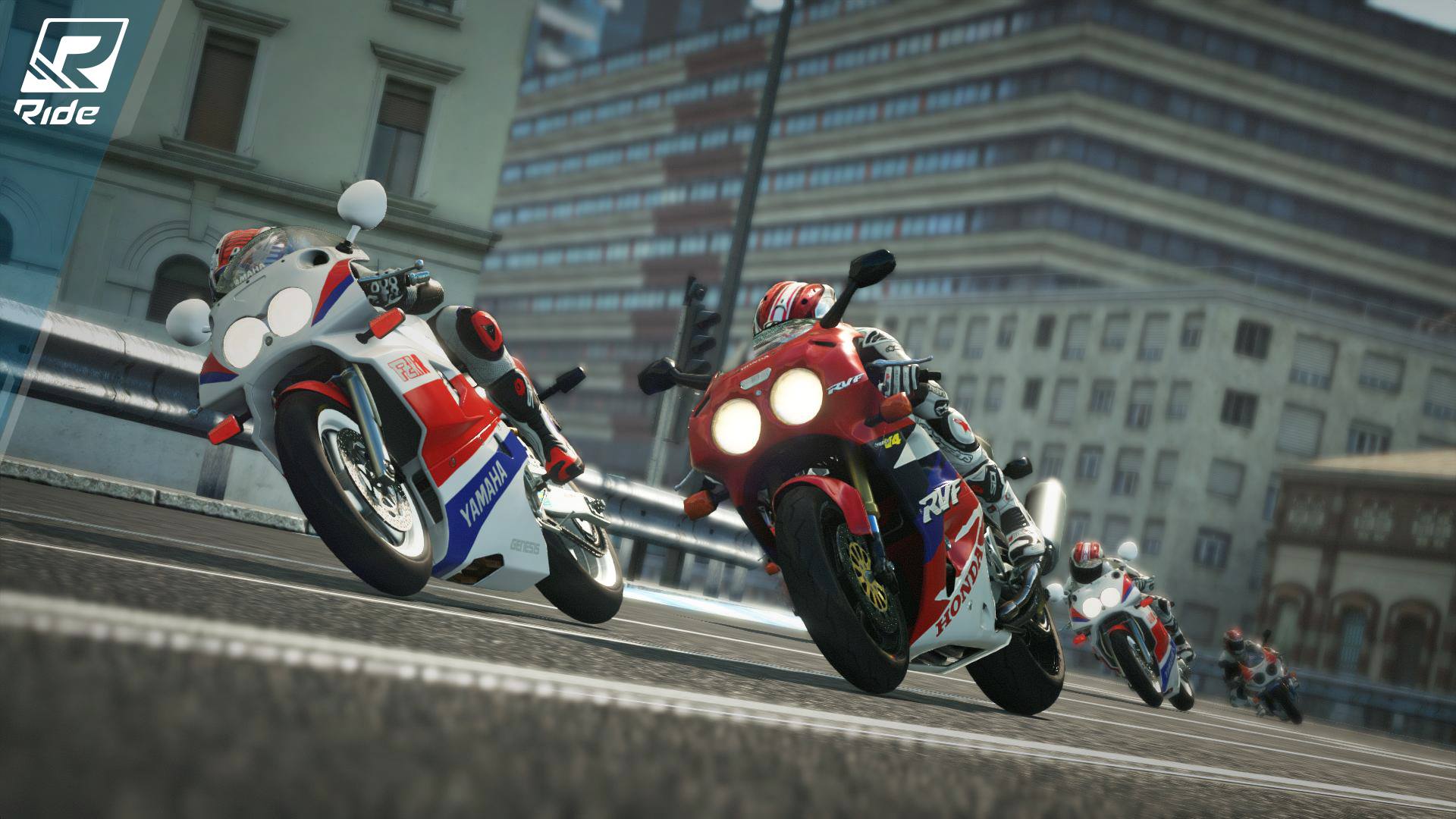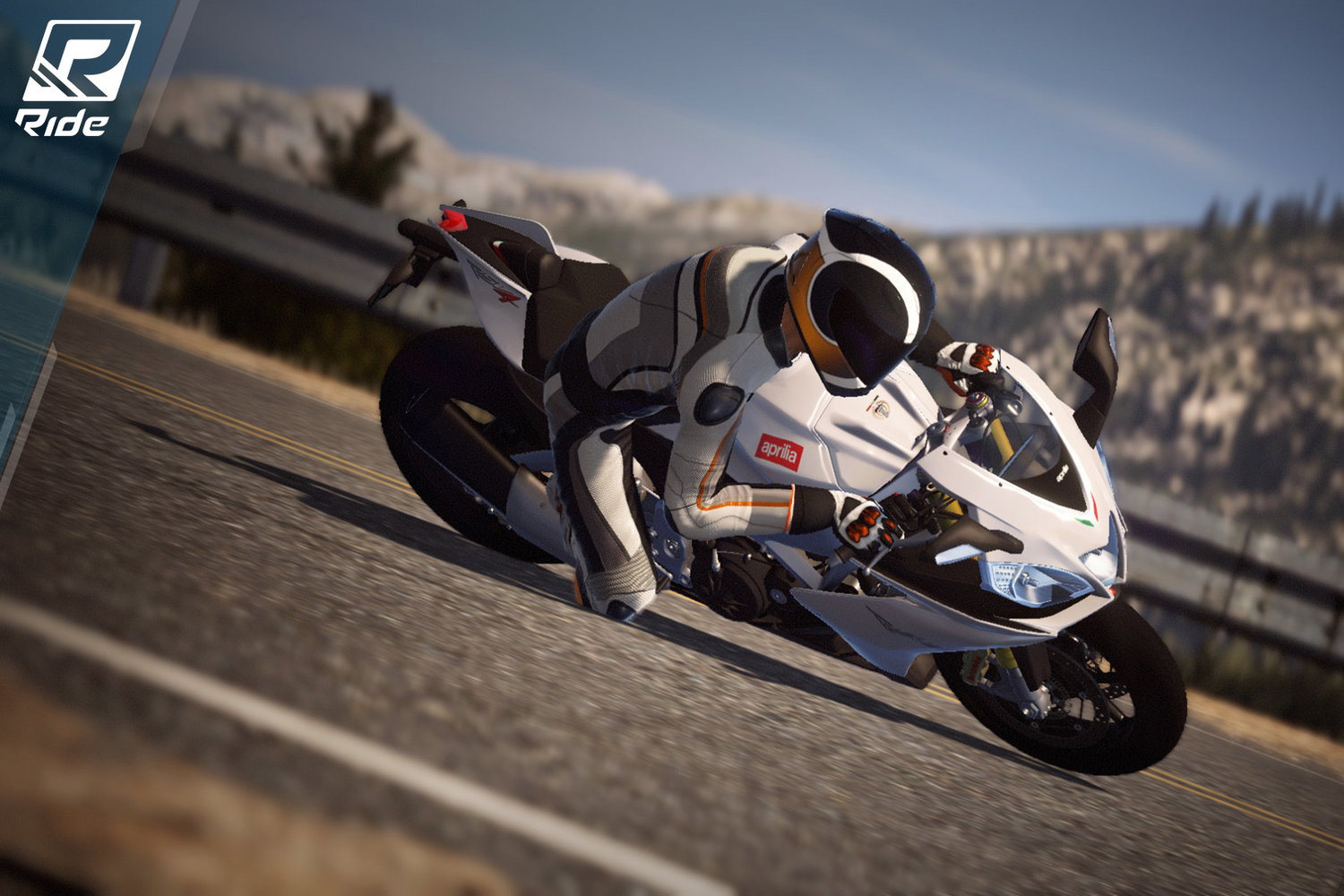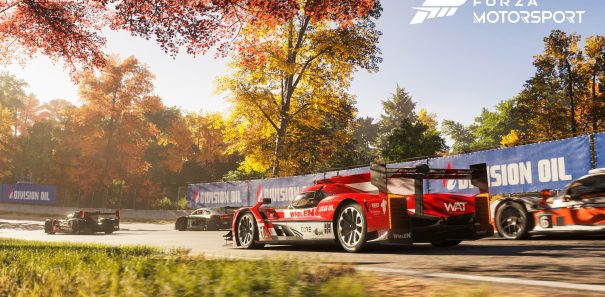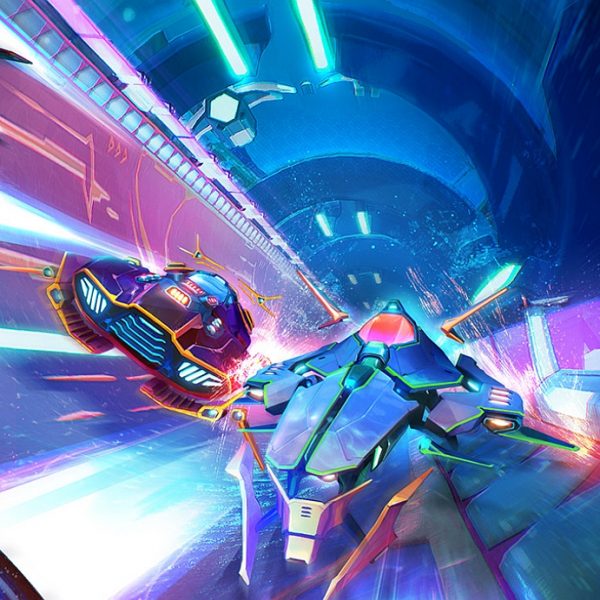Bike racing games are something of a rarity these days, so you can imagine the relief and rejoice among motorcycle enthusiasts when Ride was first announced. Featuring over 100 licensed bikes, developer Milestone boldly tout Ride as the Gran Turismo of bike games, which is a tall claim to say the very least. The racing game market is saturated with car games to the point the only time you saw road bikes in a game was with a few fleeting cameos in Project Gotham Racing and Test Drive Unlimited. It’s surprising, then that it’s taken this long for the void to be filled with a release like Ride – not since Polyphony Digital’s motorcycle spin-off Tourist Trophy in 2006 have we seen a bike racing game with such ambitious scope.
If there’s one developer that’s up to the task of revitalising this retired genre, it’s Milestone. The prolific Italian team have an unrelenting passion for biking, and it shows in their game portfolio, having worked with prestigious motorcycle racing licenses over the years such as MotoGP, SBK and MXGP. As a developer synonymous with bike racing games to the point they practically have the genre all to themselves, Ride represents the next logical step in fueling their passion in what is a new direction for Milestone; a new bike racing IP freeing them from the shackles inflicted by adhering to motorsport licenses. So, is Ride the game bike purists have been pining for?

Ride’s polished presentation makes no attempt to hide its intention to be the biking equivalent to Gran Turismo. Indeed, Milestone’s passion for biking is evident everywhere you look: every one of the 100+ bikes is treated like a sacred object, dazzling you with sweeping slow-mo pans from every possible angle prompting you to marvel at the intricately detailed models, while information tidbits explain each bike in exhaustive, encyclopedic detail.
The bikes look stunning too, modeled with a level of diligent detail that would make Polyphony proud. Your rider is equally well-rendered too, depicted with realistic animations and highly detailed racing leathers. Indeed, the bike models on show here easily surpass Milestone’s previous efforts – these are the best looking bikes and riders seen in a game to date. And like Gran Turismo, these bikes never look anything less than pristine as there is sadly no visual damage when you inevitably take a tumble.
Complimenting Ride’s slick menu system is a soothing soundtrack designed to evoke an air of sophistication, but attempts to mimic Polyphony’s panache fall flat as soon as the pretentious narrator chimes in. Clinically describing the game mechanics and bike classes, it’s supposed to convey Milestone’s passion for biking like Clarkson and co did for Forza’s cut scenes, but Ride’s monotone voice-over comes across as cold, charmless and downright creepy.
A myriad of motorcycles are available to choose from, with 113 bikes in total spanning 14 renowned manufacturers from the likes of Ducati, Triumph and Suzuki to name a few, spread over four classes comprising Naked, Supersport, Superbike and Historical bikes, each with noticeably different speed and handling characteristics.

Unsurprisingly, these statistics result in Ride having the largest roster of bikes and manufacturers in a game since (you guessed it) Tourist Trophy. It’s fair to say that motorcycle enthusiasts should find something to suit their taste, but it’s by no means a definitive list.
However, Ride falls into the same trap as Polyphony when it comes to the bike selection, padding out the list for the sake of bringing the numbers up – it’s very much a case of quantity over quality.
Browse through the manufacturers and you’ll notice some repetition – there are four variants of the BMW S 1000 to name one example, all of which are virtually identical bar a few minor differences in power and weight which even purists would have to admit is over compensating. They’re even all from the same year. Only a haldful of pre-2000’s bikes fall under the Historic category too and there is a distinct lack of two-stroke motorcycles, too, which is a missed opportunity. Chances are, these omissions are paving the way for future DLC, predictably.
Take a Ride
As with MotoGP, you can select one of three handling models with varying levels of assists applied to cater for your individual skill level. Sticking to the entry-level difficulty makes Ride play like an arcade racer where it’s genuinely difficult to make your rider fall off. Semi-Pro and Pro settings, on the other hand, veer closer to simulation territory, adding the ability to ride with front and rear brakes enabled and manual tuck in, but Ride’s physics are altogether less demanding than MotoGP’s.
Of course, it’s partly a result of the transition from MotoGP’s souped-up racing bikes to Ride’s road bikes, but also an attempt to attract a wider audience. As a result, Ride feels more intuitive, and arguably more fun to play than MotoGP, particularly for casual players.
The difference between bike classes is also immediately tangible: nimble naked bikes act as a gentle introduction ideal for novice players to get to grips with the physics, whereas the savage superbikes are tricky to tame, where anything but liberal throttle and brake management will offset the bike and cause your rider to kiss the tarmac. Fortunately, your rider won’t suffer any concussion as Milestone’s race-saving rewind feature returns, allowing you to wind the action back to the point before your accident and continue without incident. It’s a feature commonly found in Codemasters’ games which led to many accusing Milestone of borrowing their feature – just to settle the score, rewind, or flashback as it’s known in Codemasters’ games, was originally implemented in Milestone’s SCAR Alfa Romeo tribute game.
Encompassing all the nuances of riding a motorcycle in a racing game is no easy task, particularly as you have to account for the rider’s weight as well as the subtleties in the vehicle handling such as joint braking, but Milestone’s experience in this field has led to their physics model improving with each new release – and Ride is possibly their best yet. Once you get into a flow, the feeling of shifting your weight and diving gracefully into a corner mere millimeters from your opponent where a slight scrape could spell disaster is deeply satisfying and rewarding. I do question the accuracy of some of the bike’s handling characteristics though, as some of the sluggish entry level bikes have a tendency to understeer more than you would expect.
Pimp my Ride
Like Polyphony, Milestone understands that players like to personalise their ride. As such, the level of customisation in Ride is pleasingly comprehensive.
You can adorn your bike with a whole host of mechanical upgrades and cosmetic changes, with the ability to swap exhausts, the ECU, gearbox, suspension, brake pads and more, plus alter the appearance of the wheels, handlebars, indicators, liveries etc. Mechanical upgrades have a noticeable upgrade on your bike’s performance, and the after-market parts are fully licensed too: bike enthusiasts will recognise parts from suppliers such as Rizoma, Barracuda and Starline.

You can also kit your rider avatar with licensed apparel, with custom helmets, shoes and suits from clothing companies including Shoei, AGV and Alpinestar. And if formal riding gear doesn’t suit you, Ride lets you race in a casual shirt and jeans if you desire, which would never be permitted in a MotoGP game.
There are even options to adjust your rider’s individual riding style, using The Sims-style sliders to tailor their posture. It’s ridiculously excessive to the point there are 20 options to adjust your shoulder position alone, but itsays a lot about Milestone’s intentions – these minute details make Ride resonate with bike enthusiasts like few games before it. Indeed, Ride’s deep customisation sets it apart from previous releases as a headline feature, and seems to be a future focus for Milestone as customisation has been confirmed to feature in MotoGP 15 for the first time as well.
You can also see Gran Turismo’s influence in Ride’s extensive World Tour career mode, where the aim is to reach the top of a fictional world leaderboard. After creating your custom rider (for the first time in a Milestone game you can actually play as, heaven forbid, a female rider), Ride presents you with an overwhelming number of events to participate in spanning multiple bike classes, locations and race types. Compared to MotoGP’s extravagant interactive motorhome menu, Ride is comparatively stripped back, presenting you with a barebones list of events divided into eight main categories for each bike class, with a further hierarchy of sub-groups.
Like DriveClub, Milestone have gone for a minimalist approach here, but every event is unlocked from the start: providing you have enough credits to buy the bikes required in certain races, you can race in any event you like, making it refreshingly nonlinear. It’s a similar sandbox style adopted by Project CARS’ career, except Slightly Mad Studios took this one step further by doing away with currency altogether.

Ride’s career is peppered with a multitude of event types that stray away from the standard circuit races to maintain your interest. Head to heads make things more personal in one-on-one duels where you have to stay ahead of a rival rider for a fixed time, while track days take a more relaxed approach: essentially, these are glorified overtaking challenges where you have to overtake a number of slow Sunday riders within the time limit. Drag races, on the other hand, take place on salt flats only available in this mode, requiring different tactics altogether as you have to time your gear changes to maximise your speed and defeat the opponent.
There are also Team Races where you and a teammate race against six other groups of teams, as well as Endurance events (Milestone’s definition of endurance may be a bit warped since they’re a bum-numbing 8 laps in length) in addition to the standard Championships, Single Races and Time Attacks. Completing these will eventually unlock additional Elite Trophy events as you move up the ranks, with prize bikes up for grabs for your efforts. The seemingly-endless choice of championships do a good job of mixing events up and there are over 200 events in all, so players who persevere will get plenty of mileage.
Unfortunately, the on-track racing lacks the thrills a bike racing game should provide, as the robotic AI makes the races tediously tame, stubbornly sticking to the racing line and failing to react to your position as if they’re on rails – again, another trait inadvertently inherited from Gran Turismo.

But while the AI adversaries may not actively jostle for position, they are extremely competitive in terms of speed. It’s challenging, yes, but the difficulty is inconsistent: lower the difficulty and you’ll blitz past them with ease, but ramp it up a notch and you’ll often find yourself languishing midfield as some of the riders pull away and remain miles ahead at the front.
You also can’t qualify, so you’re forced start every race in 8th position: there were a number of occasions where I was stuck midfield for the duration of the race because the AI were so overpowered. The reliance on tuning also offsets the balance: you have to continuously buy parts to upgrade your bike in order to stay competitive or save up for the fastest bike in class, rather than rely on your own skill.
Tourist Trophy
While Ride has plenty of bikes, the track selection is disappointingly sparse with only 15 locations. The majority of Ride’s tracks take place in fictional circuits set in real world locations based on routes that resonate with riders on a sunny Sunday, from the woodland roads of Wales to the Nevada desert.
Speaking of iconic riding routes, where is the Isle of Man? Given Ride’s focus on everyday rural roads, not featuring the infamous TT circuit that still claims the lives of its fearless participants year after year (how this decidedly deadly annual competition is still allowed to run is beyond me) is a sorely missed opportunity that would undoubtedly have been a major selling point for Ride, particularly as it hasn’t been seen in a game since Jester Interactive’s officially licensed TT Superbikes series on PS2.
You’re left with a handful of licensed race tracks including Imola and Donnington along with some underused gems such as Stelvio and Almeria, but the selection is pitiful. The fact that Milestone’s MotoGP license gives them access to a host of real world racing circuits only makes Ride’s distinct lack of locations even more apparent. Unlike MotoGP, there are no weather effects or time of day options either, so the scenery soon becomes scenery.

Unfortunately, this leaves you with the lingering impression that Milestone’s focus, and indeed budget, was primarily allocated to the bikes at the expense of other aspects – a trait that isn’t uncommon in their back catalogue. Indeed, while the bikes look practically photorealistic, the uninspiring locations pale in comparison, blemished with bland lowly-detailed textures, potent pop-in and Milestone’s trademark sterility that makes the environments completely devoid of atmosphere. The track textures are also far too clean to represent a well-worn racing circuit. All this results in Ride looking like a dated last-gen game.
It’s a shame, because you have to give the developers some credit: Milestone evidently did a lot of research, as the roads, scenery and architecture in each location all look authentic: the serene French Rivera is a particular highlight with its tight turns and breath-taking vistas, although its sweeping roads are far too wide for it to be a realistic street circuit, which makes it more accessible but dilutes the thrills.
The fact that Ride was developed for PS3 and Xbox 360 as well as PS4, Xbox One and PC (seriously, when are developers finally going to let go of the last-gen formats?) probably didn’t do the subpar graphics any favours, forcing the developers to spread their resources. At this point of the console generation however, these issues that keep persistently plaguing Milestone’s releases are getting harder to overlook.
Ride’s bland environments would have been forgivable if the upside meant that it ran at 60fps, but this unfortunately isn’t the case – at least not on PS4. Instead, Ride runs at a fairly solid 30fps on consoles, and while it’s nowhere near as unstable as it was in preview builds, pushing a bike to its limits in Ride never feels fast when in reality it’s one of the most exhilarating motorsports you can experience. Milestone would do well in learning from Evolution Studios on how to achieve 30fps without sacrificing the sense of speed, as DriveClub is edge-of-your-seat exhilarating despite its reduced frame rate.
Ride’s performance is said to be even worse on Xbox One, despite its extra development time to boost the resolution from 900p to 1080p. On PC, Ride doesn’t fare much better, either. While it benefits from an increased frame rate to 60fps which dramatically improves the fluidity, and therefore the sense of speed, it still suffers from numerous performance issues. Even on a powerful PC, getting Ride to run smoothly is said to be a struggle.
Rough Ride
Ride’s lack of polish pervades other aspects of the game, too. The loading times, for example, are inexplicably excessive – getting from selecting your bike to being out on the track takes well over a minute. An interactive model of your bike helps pass the time, but Ride’s lengthy loading times are particularly perplexing when the game isn’t exactly causing the PS4 to break a sweat in the graphics department. It’s unacceptable for a current-gen game – we can only hope a patch is released to optimise Ride’s performance. You could probably become fluent in Italian by the time Ride loads up.
Likewise, Ride’s lackluster audio design leaves a lot to be desired. Engine notes sound artificial, lacking the ferocity of a real bike, while the generic rock soundtrack would have sounded cheesy even in the ‘80s.
Milestone at least made the effort to include an immersive helmet cam viewpoint similar to Slightly Mad Studios’ Shift and Project CARS. However, the illusion is shattered if you glance at the side mirrors which don’t sport any dynamic reflections so you can’t monitor your opponent’s positions, instead showing a repeated pixelated shot of the moving track: it’s like looking at a static TV. Again, it’s one of many examples of Milestone’s commendable ambitions being let down by sloppy execution.

Worse still, Ride was riddled with a number of game-breaking bugs on release: the longstanding leaderboards glitch returns, and we haven’t forgotten about the notorious game save corruption glitch which erased hours of painstaking career progress for many frustrated players. It’s since been fixed, mercifully, but shouldn’t have been an issue in the first place. How it got past quality control is still a mystery.
Up to 12 players can race online in Ride, with AI riders filling in the gaps. The experience seems stable with the only noticeable lag occurring when other riders crashed while the game reset their position, but the servers aren’t exactly overpopulated right now, as I could only find half a dozen available race events on average. Like in the single player, you can rent a bike if you haven’t accumulated many rapid rides of your own, but having to wait in lobbies becomes tiresome, particularly as you can’t spectate races already in progress other than staring at a live feed of the track map indicating player positions.
In aspiring to be the modern-day Gran Turismo of bike games, Ride successfully mirrors Gran Turismo’s strengths as well as its pitfalls. As ever, you can tell that Ride has been a labour of love: motorcycle enthusiasts will revel Ride’s vast assortment of bikes, satisfying handling and comprehensive customisation options but the lack of locations, insipid racing and some unfortunate technical shortcomings mar the overall experience and cause Ride to misfire.
It’s a pity, because many of these issues could have been rectified with some extra development time, leaving you with the feeling that Ride was rushed for release to give it room to breathe before the impending release of MotoGP 15 in June and Sebastien Loeb Rally Evo later this year. Alas, Ride is a fine foundation for a future franchise and a valiant attempt to get bike racing games back into the limelight, but it could and should have been something special.
Like a vintage Italian motorcycle, Ride has been built with passion and soul, but its components are second-rate. It takes an age to start and sometimes breaks down – but you still can’t help but love it and forgive its faults.






























